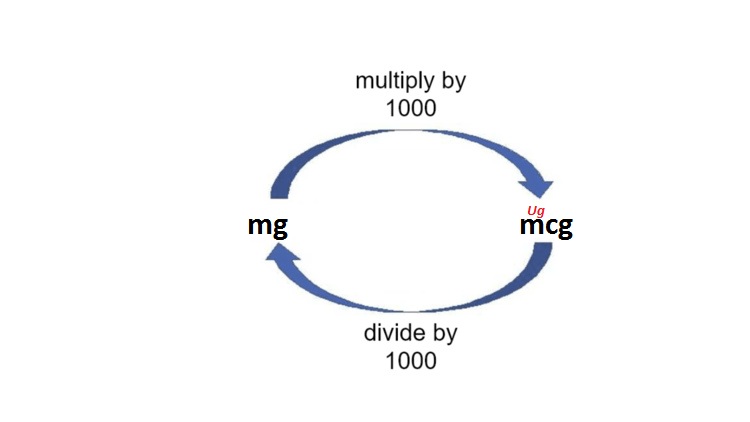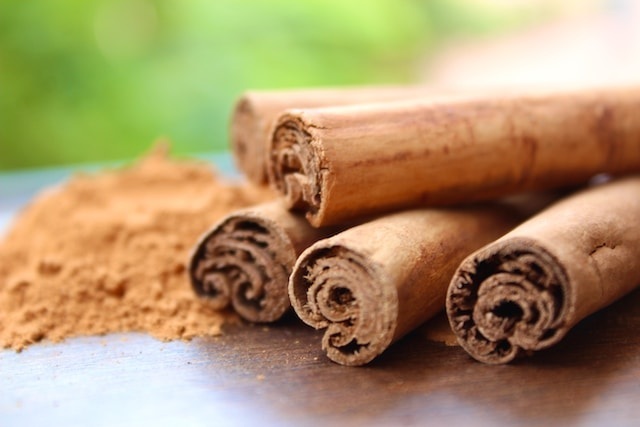
How to Convert Milligrams To Micrograms (Mg to Mcg): A Simple Guide
When it comes to weights and measurements, precision is key. If you’ve ever wondered how to convert milligrams (mg) to micrograms (mcg), you’re in the right place. This conversion might seem daunting at first, but it’s actually quite straightforward. In this guide, we’ll break it down step by step and make it as simple as possible.
Understanding Milligrams (mg) and Micrograms (mcg)
Before we dive into the conversion process, let’s get a clear understanding of what milligrams and micrograms are
What is Milligrams (mg)
Milligrams are a unit of weight in the metric system. One milligram is equal to one thousandth of a gram, and it’s often used to measure the weight of small objects or substances.
Frequently Used
- Used to calculate drug dosage.
- A scale that is used to determine a peanut’s mass.
- Utilized to calculate the toffee’s mass.
What is Micrograms (mcg)
Micrograms are an even smaller unit of weight in the metric system. One microgram is equal to one millionth of a gram, making it a suitable unit for measuring extremely small quantities, such as the weight of individual cells or vitamins.
Frequently Used
- Used to estimate various food items’ nutritional contents, including vitamins, carbs, etc.
- Utilized to determine the dose for a few medications.
- Used to assess whether a particular chemical is present in cosmetic items.
How to Convert 50 milligrams to micrograms.
1: The given value is 50 milligrams.
2: To convert milligrams to micrograms, substitute the given values at the required places in the conversion formula.
X mg = X × 1000 μg
Therefore,
50 mg = 50 × 1000 μg
= 50000 μg
Hence, 50 milligrams is 50000 micrograms or 50000 μg
The Conversion Process – How to Convert Milligrams To Micrograms (Mg to Mcg)
Now, let’s get to the heart of the matter: how to convert milligrams to micrograms. Fortunately, it’s a simple process, and all you need to remember is the conversion factor: 1,000.
To convert milligrams (mg) to micrograms (mcg), you multiply the number of milligrams by 1,000. Here’s the formula:
Number of Micrograms (mcg) = Number of Milligrams (mg) × 1,000
Let’s break it down with an example:
Example: You have 5 milligrams, and you want to convert it to micrograms.
Number of Micrograms (mcg) = 5 mg × 1,000 = 5,000 mcg
So, 5 milligrams is equal to 5,000 micrograms.
Practical Applications – How to Convert Milligrams To Micrograms (Mg to Mcg)
Understanding how to convert milligrams to micrograms can be incredibly useful in various fields. Here are a few practical examples:
Medication Dosages
In the medical field, accurate dosing is crucial. Medications are often measured in milligrams, but sometimes, patients require microgram-level precision. Knowing how to convert between the two units ensures that the correct dosage is administered.
Nutrition and Supplements
Nutrition labels on food products and dietary supplements sometimes provide information in milligrams or micrograms. Converting between these units allows you to make informed choices about your dietary intake.
Scientific Research
Scientists and researchers often work with substances that require precise measurements. Whether it’s studying cellular components or analyzing trace amounts of a substance, converting between milligrams and micrograms is a fundamental skill.
Chemistry
Chemists dealing with chemical reactions and solutions often need to convert between different units of measurement, including milligrams and micrograms.
FAQs On How to Convert Milligrams To Micrograms (Mg to Mcg)
Why is it necessary to convert milligrams to micrograms?
Converting between milligrams and micrograms is necessary when you need to work with extremely small or precise measurements.
Can I convert micrograms to milligrams using the same method?
Yes, you can convert micrograms to milligrams by dividing the number of micrograms by 1,000. The formula is: Number of Milligrams (mg) = Number of Micrograms (mcg) ÷ 1,000.
Are milligrams and micrograms the only units for weight in the metric system?
No, there are other metric units for weight, such as grams, kilograms, and metric tons. Milligrams and micrograms are used when dealing with very small quantities.
Can you provide an example of a real-life scenario where this conversion is useful?
Sure, imagine you have a dietary supplement that contains 500 mg of a particular vitamin. To understand the dosage better, you might want to convert it to micrograms to see that it’s actually 500,000 mcg.
Is there a shortcut or easy way to do this conversion mentally?
For most conversions involving milligrams and micrograms, multiplying or dividing by 1,000 is the quickest and most straightforward method.
What are some common mistakes to avoid when converting units like these?
One common mistake is forgetting to use the conversion factor of 1,000. Always remember to multiply milligrams by 1,000 to get micrograms, or divide micrograms by 1,000 to get milligrams.
Are there online tools or calculators available to help with these conversions?
Yes, many online unit conversion calculators can make this task even easier. Simply input the value in one unit, select the desired output unit, and let the calculator do the work.
Are there any other metric unit conversions I should be aware of?
While milligrams to micrograms is a common conversion, it’s helpful to be familiar with other metric unit conversions, such as grams to kilograms or centimeters to meters.
Can I use this conversion method for other metric unit conversions?
This method specifically applies to converting milligrams to micrograms and vice versa. For other metric unit conversions, you’ll need different conversion factors.
Is there a practical limit to how many times I can convert between these units?
There is no practical limit to the number of times you can convert between milligrams and micrograms. You can go back and forth as needed to suit your specific measurement requirements.
Conclusion
Converting milligrams to micrograms is a straightforward process that can be immensely helpful in various fields, from medicine to nutrition and scientific research. Remember the conversion factor of 1,000, and you’ll have no trouble making accurate conversions whenever you need to work with these units of weight.


